Food of the colony
Through in-depth primary source analysis students investigate what the First Fleet convicts consumed during the first few years of settlement and identify the challenges of finding food sources to keep famine at bay.
Key inquiry question #1
Why did Europeans settle in Australia?
Key inquiry question #2
What was the nature and consequence of contact between Aboriginal and/or Torres Strait Islander peoples and early traders, explorers and settlers?
Learning Intention
Students are learning to:
- understand the different aspects of everyday life of First Fleet convicts
- recognise the challenges of finding, growing and keeping food
- examine historical sources of information
Success criteria
Students will be successful when they can:
- explain the food challenges for everyone in the colony
- identify the types of food consumed by First Fleet convicts
Student Activities
Food They Brought With Them
Students explore how food was the focus for everyone in the First Fleet settlement.
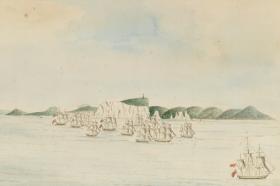
Cook Your Own Food
Students discover the ways the First Fleeters cooked their food rations in the camp kitchen.
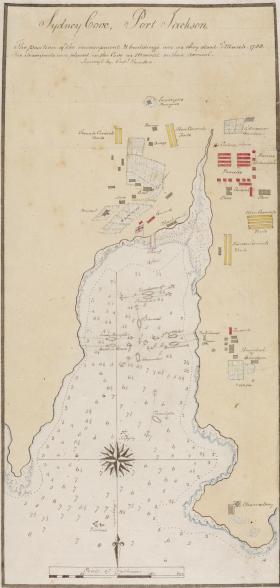
The Food They Tried to Grow
Students identify the types of food grown by the colonists and the associated challenges and successes.
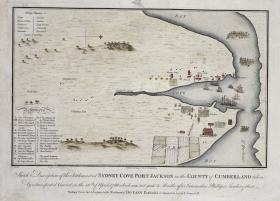
Looking to learn
Students uncover the food sources and practices of Aboriginal people and look at the colonists’ response to local food.
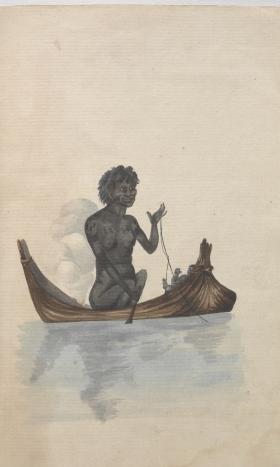
The Animals They Brought With Them
Students determine the fate of the animals that were brought to New South Wales and their place in the diet of the colonists.
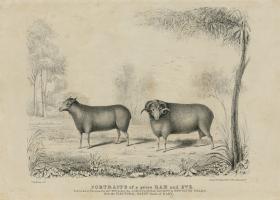
The Food That Was Found
Students research the many different food sources that were found in the colony.
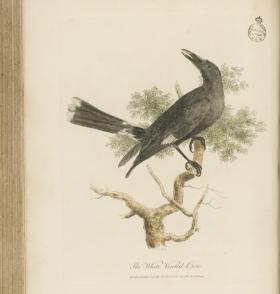
Famine
Students examine the impact of a prolonged food shortage in the early colony.
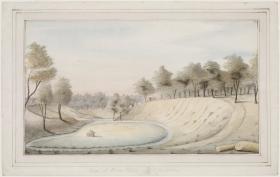
The Trouble With Food
Students investigate the food crimes and examine the moral issues around hunger and stealing food.
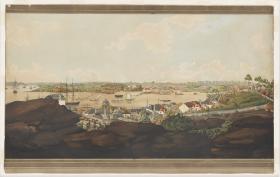
NSW Syllabus for the Australian Curriculum History K-10
A student:
- HT2-3 describes people, events and actions related to world exploration and its effects
- HT2-4 describes and explains effects of British colonisation in Australia
- HT2-5 applies skills of historical inquiry and communication
Stories of the First Fleet, including reasons for the journey, who travelled to Australia, and their experiences following arrival (ACHHK079)
Students:
- describe the establishment of the British colony at Port Jackson
- using a range of sources, investigate the everyday life of ONE of the following who sailed on the First Fleet and lived in the early colony: a soldier, convict, ex-convict, official
The nature of contact between Aboriginal people and/or Torres Strait Islanders and others, for example, the Macassans and the Europeans, and the effects of these interactions on, for example, families and the environment (ACHHK080)
Students:
- describe the nature of contact between Aboriginal people and/or Torres Strait Islander peoples and others, including Aboriginal resistance
- use sources to identify different perspectives on the arrival of the British to Australia
- outline the impact of early British colonisation on Aboriginal and Torres Strait Islander peoples' country.
Comprehension: chronology, terms and concepts:
- respond, read and write, to show understanding of historical matters
- sequence familiar people and events
- use historical terms
Analysis and use of sources:
- locate relevant information from sources provided
Perspectives and interpretations:
- identify different points of view within an historical context
Empathetic understanding:
- explain how and why people in the past may have lived and behaved differently from today
Research:
- pose a range of questions about the past
- plan an historical inquiry
Explanation and communication:
- develop texts, particularly narratives
- use a range of communication forms (oral, graphic, written) and digital technologies
Continuity and change: changes and continuities due to British colonisation of Australia.
Cause and effect: reasons for a particular historical development
Perspectives: different points of view within an historical context
Empathetic understanding: how and why people in the past may have lived and behaved differently from today.
Significance: the importance and meaning of national commemorations and celebrations, and the importance of a person or event.
Contestability: historical events or issues may be interpreted differently by historians, eg British 'invasion' or 'settlement' of Australia.
Cross-curriculum priority:
- Aboriginal and Torres Strait Islander histories and cultures
General capabilities:
- Critical and creative thinking
- Ethical understanding
- Intercultural understanding
- Literacy
Stories of the First Fleet, including reasons for the journey, who travelled to Australia, and their experiences following arrival (ACHASSK085)
- investigating attitudes to the poor, the treatment of prisoners at that time, and the social standing of those who travelled to Australia on the First Fleet, including families, children and convict guards
- investigating daily life in the Botany Bay penal settlement and challenges experienced by the people there and how they were managed.
The nature of contact between Aboriginal and Torres Strait Islander Peoples and others, for example, the Macassans and the Europeans, and the effects of these interactions on, for example, people and environments (ACHASSK086)
- exploring the impact that British colonisation had on the lives of Aboriginal and Torres Strait Islander Peoples (dispossession; dislocation; and the loss of lives through conflict, disease, loss of food sources and medicines)
- considering whether the interactions between Europeans and Aboriginal and Torres Strait Islander Peoples had positive or negative effects
- examining paintings and accounts (by observers such as Watkin Tench and David Collins) to determine the impact of early British colonisation on Aboriginal Peoples' Country.
Additional information
The following information supports the above activities. Read the activities first.
General information about food in the colony
The focus for the first two years of the colony was on food supply. Within two months of arriving in Port Jackson it was clear that the food supply that had been meant to last two years was not sufficient, and that food rations to the convict men and marines needed to be reduced. Three gardens had been established on the eastern side of the Tank Stream and by July 1788 the Government Farm at Farm Cove had nine acres of corn. Disappointingly, the first crop of wheat did not germinate and the soil proved to be unsuitable for cereal crops. The food ration for men was then cut by one third in November 1788.
Storehouses for food were built to withstand theft – although not well enough! These storehouses were also infested with rats and weevils and prone to be affected by weather and damp.
On 4 June 1788 the Governor and Officers were having a banquet to celebrate the King’s birthday (with no idea of how hungry they would be within a few short months). Despite the abundance provided for the banquet, adequate supplies of food would be an ongoing challenge.
These rations were supplemented by any food the settlers could grow, and convicts were excused from work on Saturday afternoons so they could tend their own gardens. They looked to supplement their stored rations with local food. With so many people to feed the local supplies of these foods was diminished.
Desperation and the fear of starvation forced the authorities to consider going further afield to other places for supplies and to farm. In October 1788 the HMS Sirius was sent to Cape Town to gather more food supplies. It returned seven months later with enough for only four months or so. Governor Phillip’s next plan for the HMS Sirius next was to drop 280 convicts and marines off at Norfolk Island on the way to China in order to procure further supplies for the colony. Disaster struck with the sinking of the Sirius at Norfolk Island. Further disaster occurred when the supply ship Guardian hit an iceberg in December 1789 as it was enroute with supplies to the hungry colony.
In 1790 the fledgling colony faced a food crisis. Starvation was a real possibility despite the attempt at supplementing the diet with fish and what they could hunt. Rations were reduced again.
The hopes for additional resources for the colony in the form of fresh supplies and robust additions to the work force were dashed upon the arrival of the Second Fleet. The convicts who disembarked the ships were of very poor health and hospitalisation was required for an array of ailments They were not fit to work on the farms to help provide food but were instead a drain on the limited resources.
Farms established upriver at Rose Hill (Parramatta) in December 1788 were flourishing by 1792 and provided food for the colony. Individuals had also set up farms and were able to feed themselves and sell their surplus. Government farms continued to be worked by convict labour and those in the Parramatta and Toongabbie districts provided the colony with crops of wheat, maize and barley. Throughout these early years the food supplies were interrupted by floods, storms, droughts and theft.
Activity 1 Answers
Q: Can you guess who received the raisins, sugar, sago, spices and vinegar?
A: The Surgeon-General John White, as the hospital administrator, received these items as they were considered useful in the treatment of ill patients.
Salted meat
Salted meat is meat preserved or cured with salt. Salt inhibits the growth of micro-organisms. First, salt and saltpetre (potassium nitrate) was rubbed into the meat. The meat was soaked in brine (highly salted water) to remove the blood. After taking it out of the brine, each layer of meat was packed in a barrel with lots of extra salt between each layer. This process was repeated several times. Finally, the barrel was filled with fresh brine and sealed.
Activity 2 Answers
Q: What advantages are there to cooking in this camp kitchen?
A: The trench created a seat for the people cooking. The fires were below ground and not blown out by the wind. More than one person could use the camp kitchen. The camp kitchen was simple to create – only digging was required. Anything else?
Q: Why do think it was against the law to use a shovel for a cooking pan?
A: Governor Arthur Phillip required all tools to be used for their purpose due to the shortage of quality tools.
Activity 3 Answers
Sorting Fresh Grown Produce
- Fruits: oranges, lemons, limes, bananas, melons, figs, apples, strawberries, grapes, guavas
- Vegetables: ginger, peas, beans, yam, pumpkin, potatoes, turnips, artichokes, lettuce, onions, leeks, cucumbers, celery
- Seeds: (NB: Grains are the seeds of grasses and nuts are the seeds of trees.) Coffee, castor nut, rice, wheat, barley
- Grass: sugar cane
- Whole plant (leaves, roots, flowers, fruit): indigo, parsley
Activity 4 Answers
Nawi: One sheet of bark is heated over the fire and folded to create the hull of the canoe with the ends tied together. To keep the sides apart braces were inserted in the middle.
Q: What was the fire for?
A: The fire was for warmth and cooking.
Q: How is it that the fire can be kept safe in a bark nawi?
A: The fire in the nawi was kept on wet clay as a barrier between the fire and flammable bark.
Q: In terms of food, what do you think is being collected in the tree?
A: Possibly possums, birds, flying foxes, gliding possums, insects, lizards, snakes, insects, birds’ eggs and other native animals. They were also looking for fruit, seeds and native beehives for honey.
Activity 5 Answers
Q: Why are there so few vegetables available?
A: We can have a guess that people may have been growing plenty of their own or there may have been bad weather and crops had been affected or even sold out on the days that David Collins was visiting? Perhaps destroyed by pests? Perhaps stolen? Other ideas?
Activity 6 Answers
Q: How do you think the colonists used the sarsaparilla leaves?
A: Sweet tea drink.
Judge David Collins wrote in July 1788, 'A convict…had been out gathering what they called sweet tea, about a mile from the camp'.
These leaves were from the local sarsaparilla bush and used a tea substitute. Colonists called it ‘sweet tea’ which had a bitter-sweet taste and compared it to licorice. The scientific name is Smilax glyciphylla. The Aboriginal name for the plant is warraburra. The story about these two particular leaves is fascinating! They are associated with the First Fleet convict Mary Bryant. Mary Bryant’s story is astounding. Investigate her life story.
Activity 8 Answers
Q: Why was it called Pinchgut Island?
A: The answer to this is debated. Some say ‘pinchgut’ is a nautical term that explains the rocky outcrop’s position at the narrowest point of the cove. Whilst others believe it relates to the pain in a convict’s hungry belly! The word ‘pinchgut’ does turn up in the dictionary as an archaic term for someone who starves themselves or others.
Q: What was stopping the convicts from leaving the small island?
A: Convicts could not swim. In fact, most people at this time in history could not swim - including sailors! Also there was the threat of sharks….
Q: What is the name of this small rocky island today?
A: Fort Denison
Source list for image details in student activities
Cook Your Own Food
Image 1: William Bradley - Charts from his journal `A Voyage to New South Wales', 1802+, ca. 1802
Image 2: Francis Grose, Military antiquities : respecting a history of the English army from the conquest to the present time / by Francis Grose.,
1812
The Food They Tried to Grow
Image 1: Thomas Watling, View of Sydney Cove / painted by Thomas Watling, 1794-1796?
Image 2: Artist unknown, View at Rose Hill Port Jackson, ca. 1791
Looking to Learn
Image 1: [11 separate prints of plates contained in Voyage de découvertes aux terres Australes, 2nd ed., 1824]. [Album view], 1824
Image 2: Thomas Skottowe, 46. Groper (no.8); Parrot Fish (no.9); Unicorn Fish or Leather Jacket (no.10); Salmon (no.11) [eastern blue groper; Maori Wrasse; yellow-finned leatherjacket; eastern Australian salmon], 1813
The Animals They Brought With Them
Image 1: Vasco Loureiro, 182. [untitled chickens], 1915-1918
Image 2: Item 02: [Maned or Wood] Duck [&] Drake, ca 1792 / Sydney Bird Painter, ca. 1792
Image 3: G.H. Hammersley, G.H. Hammersley - Australia Illustrated, ca. 1777-1855, ca. 1777-1855
Image 4: John White, Journal of a voyage to New South Wales : with sixty-five plates of non descript animals, birds, lizards, serpents, curious cones of trees and other natural productions / by John White. [Album view], 1790
Image 5: Thomas Rider, H.E.I.Cos Depot. Bungarrabbee [i.e. Bungarribee] N.S.W., ca. 1847-1852 / T. Rider, ca. 1847-1852